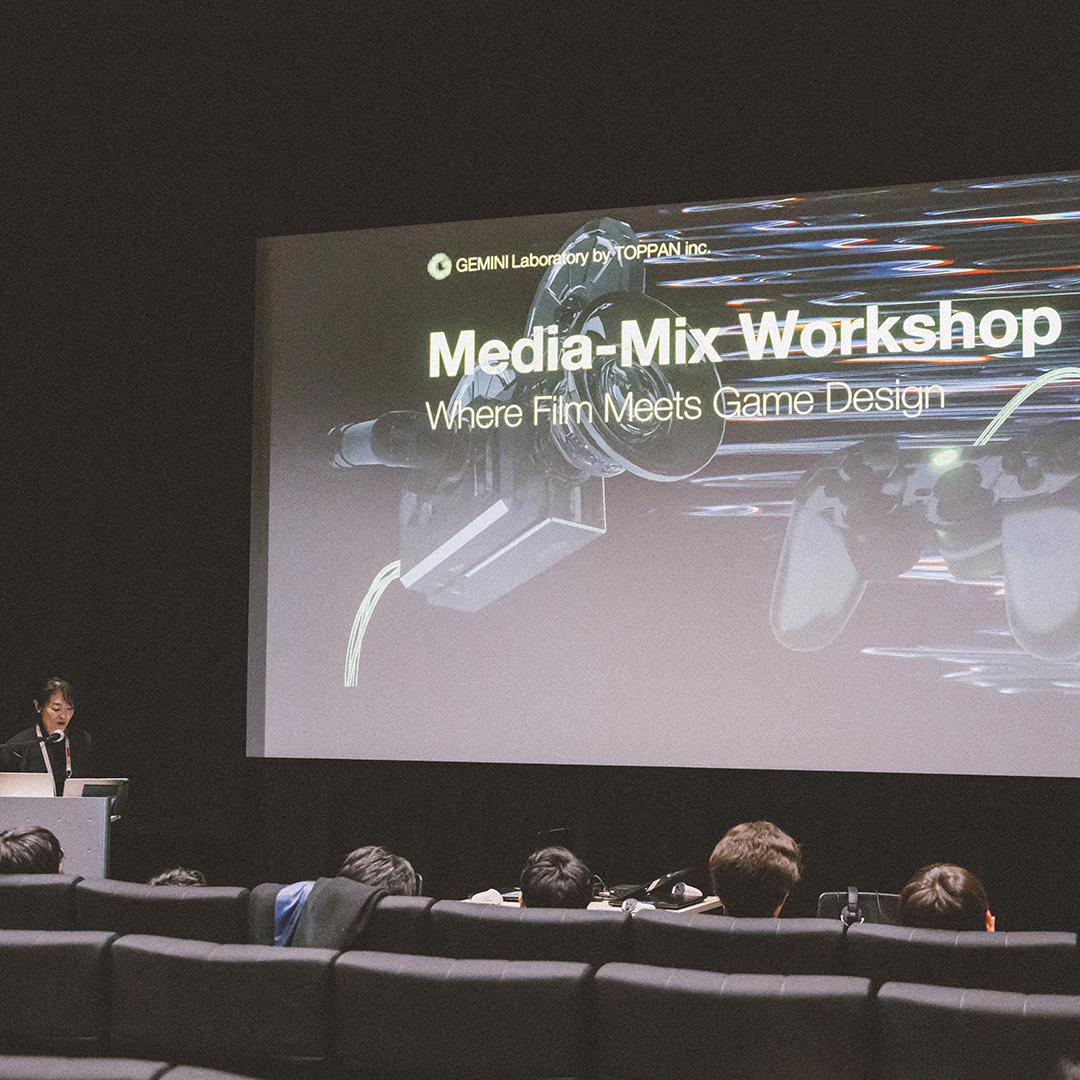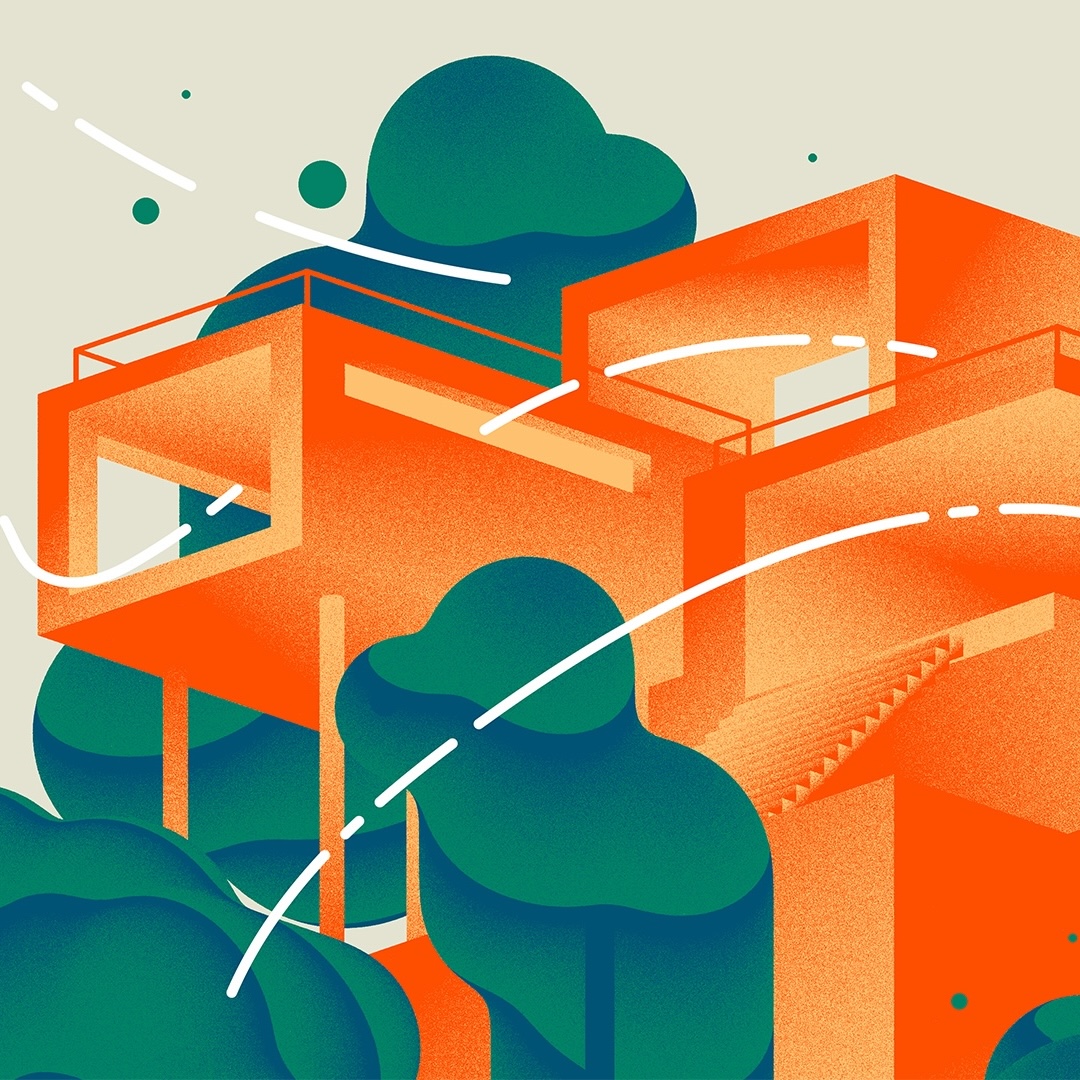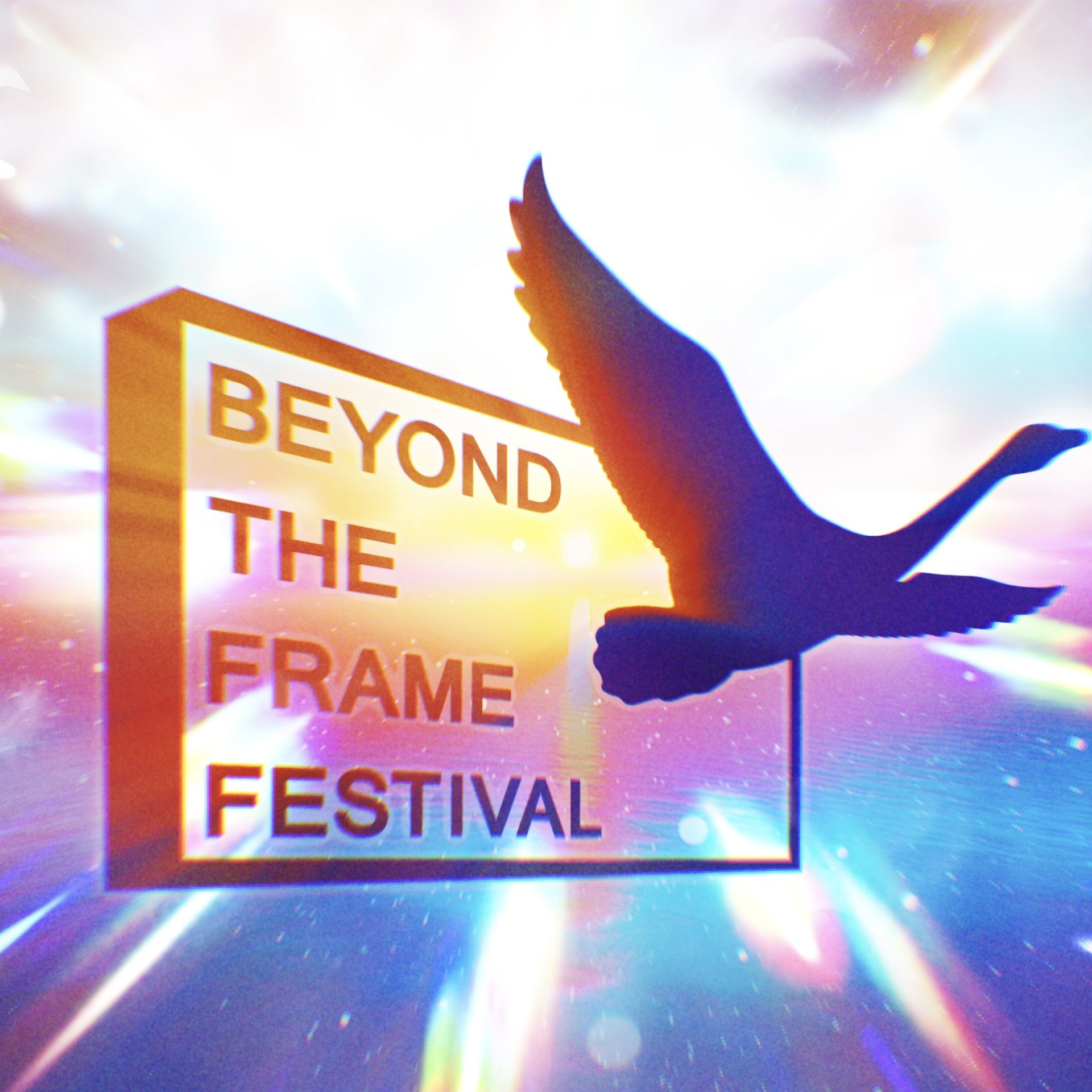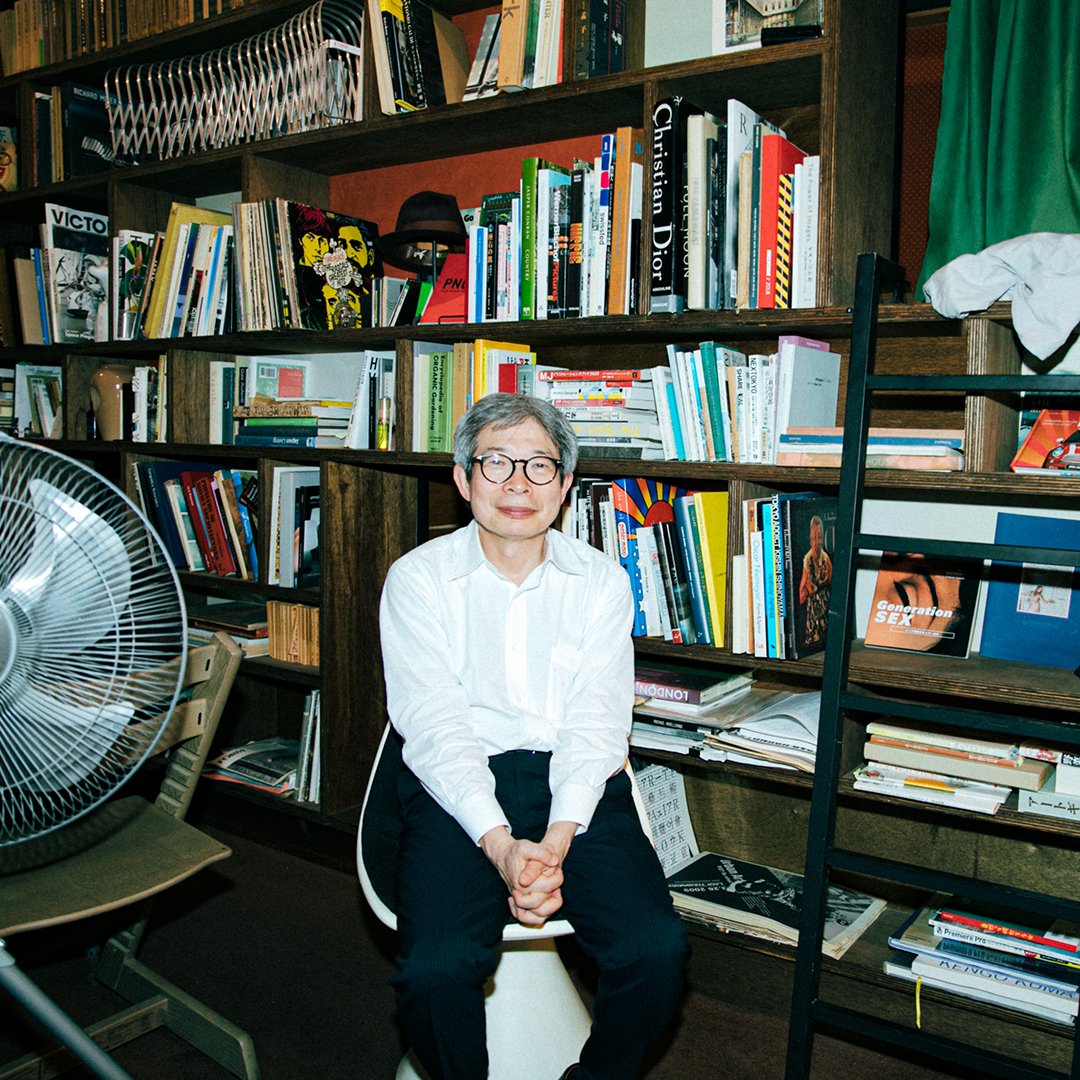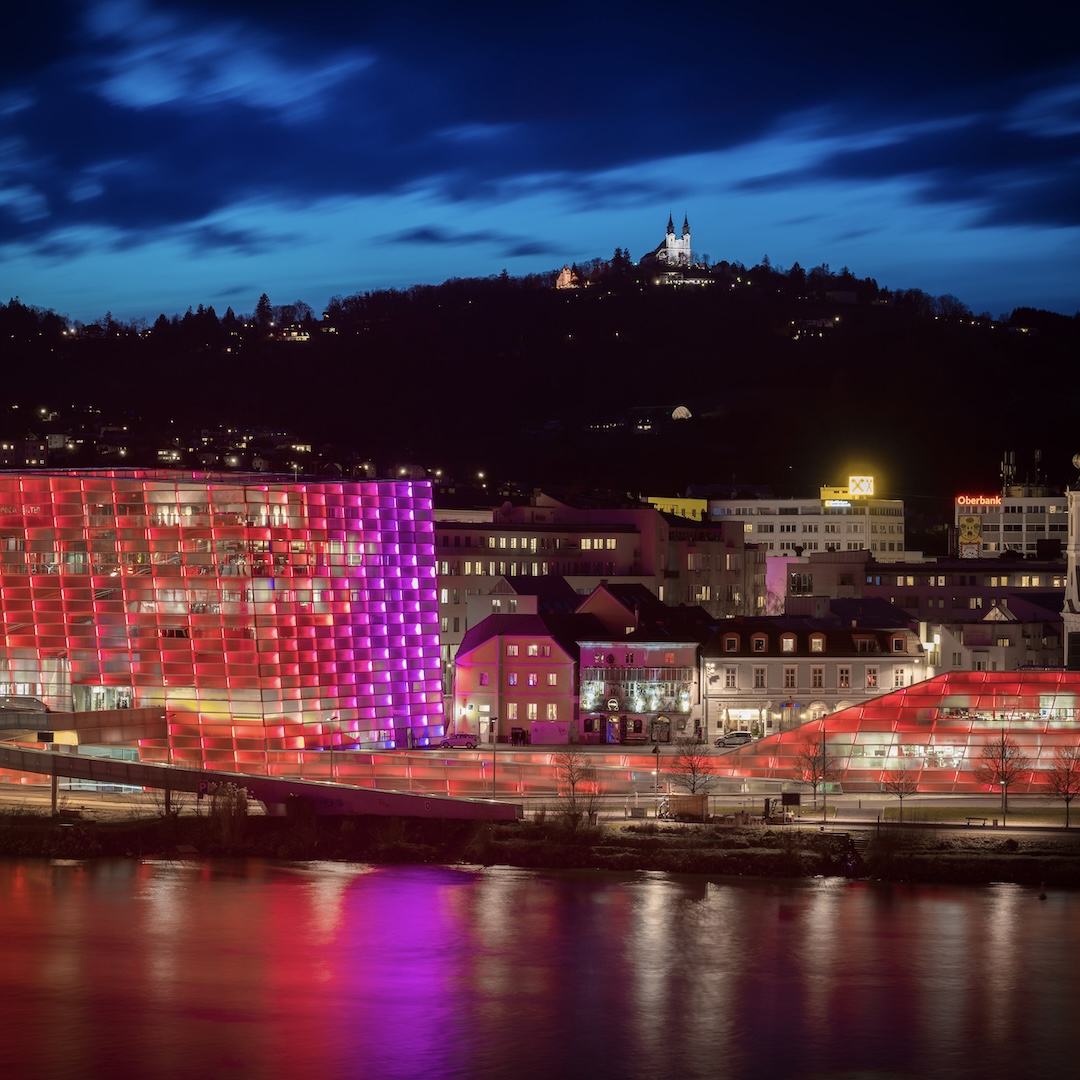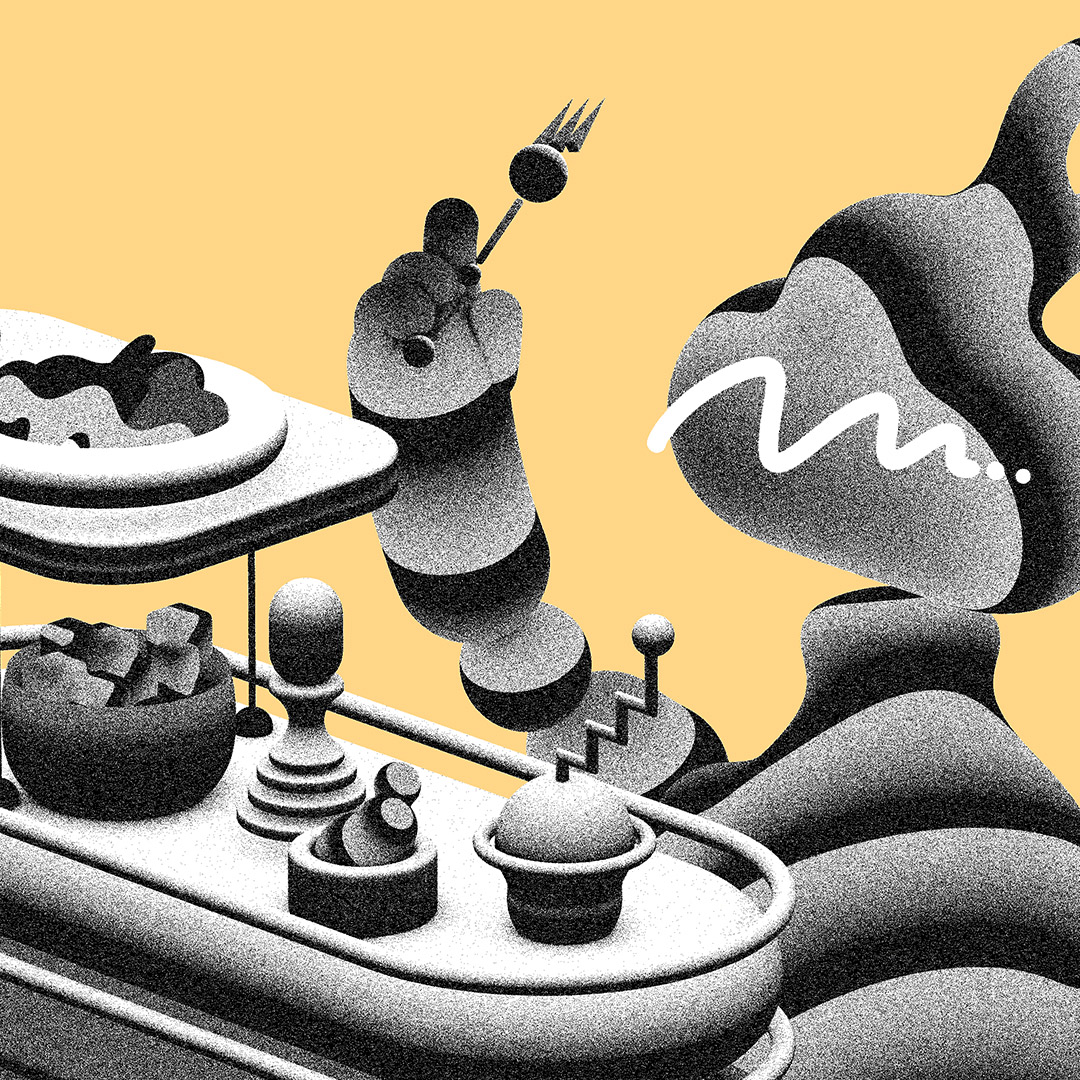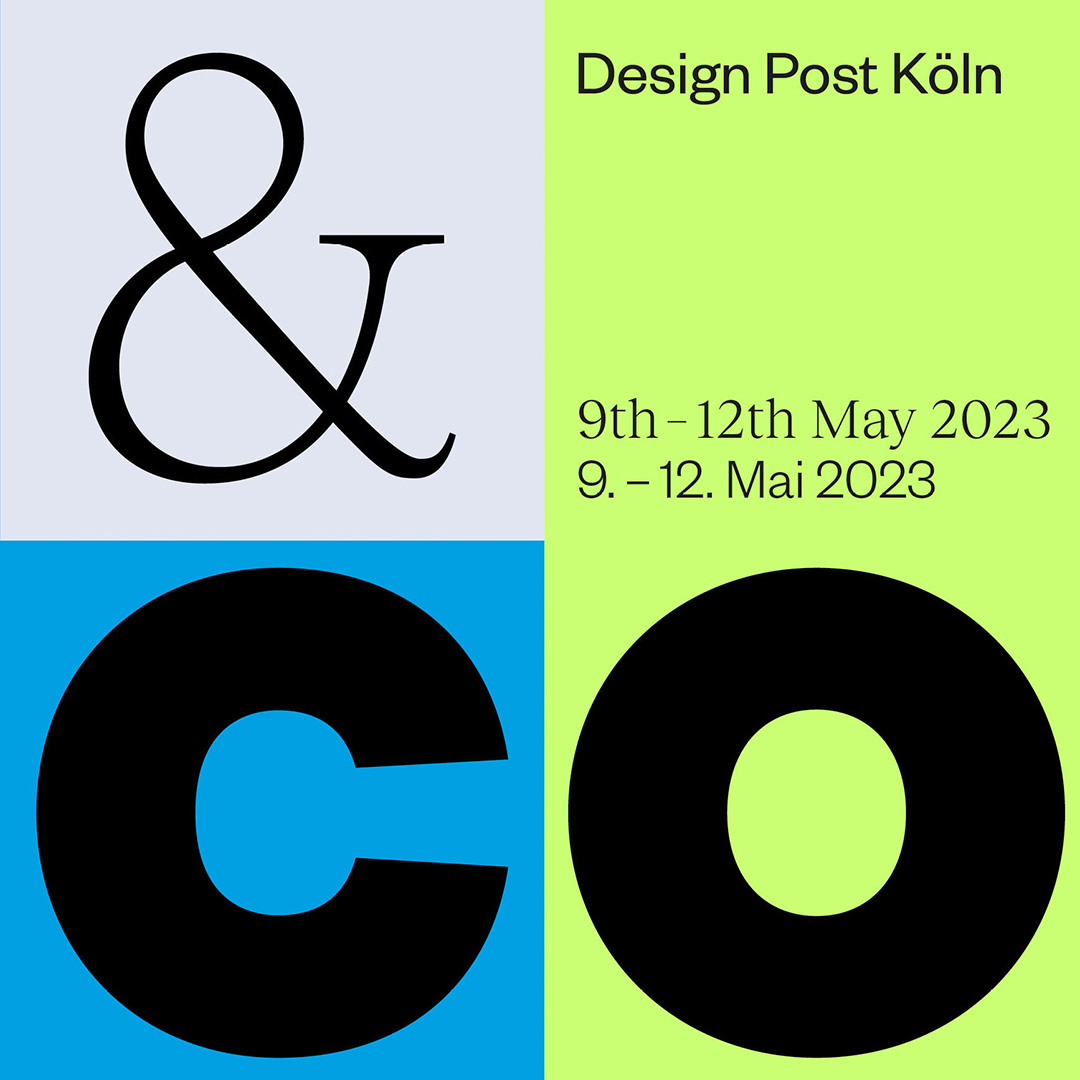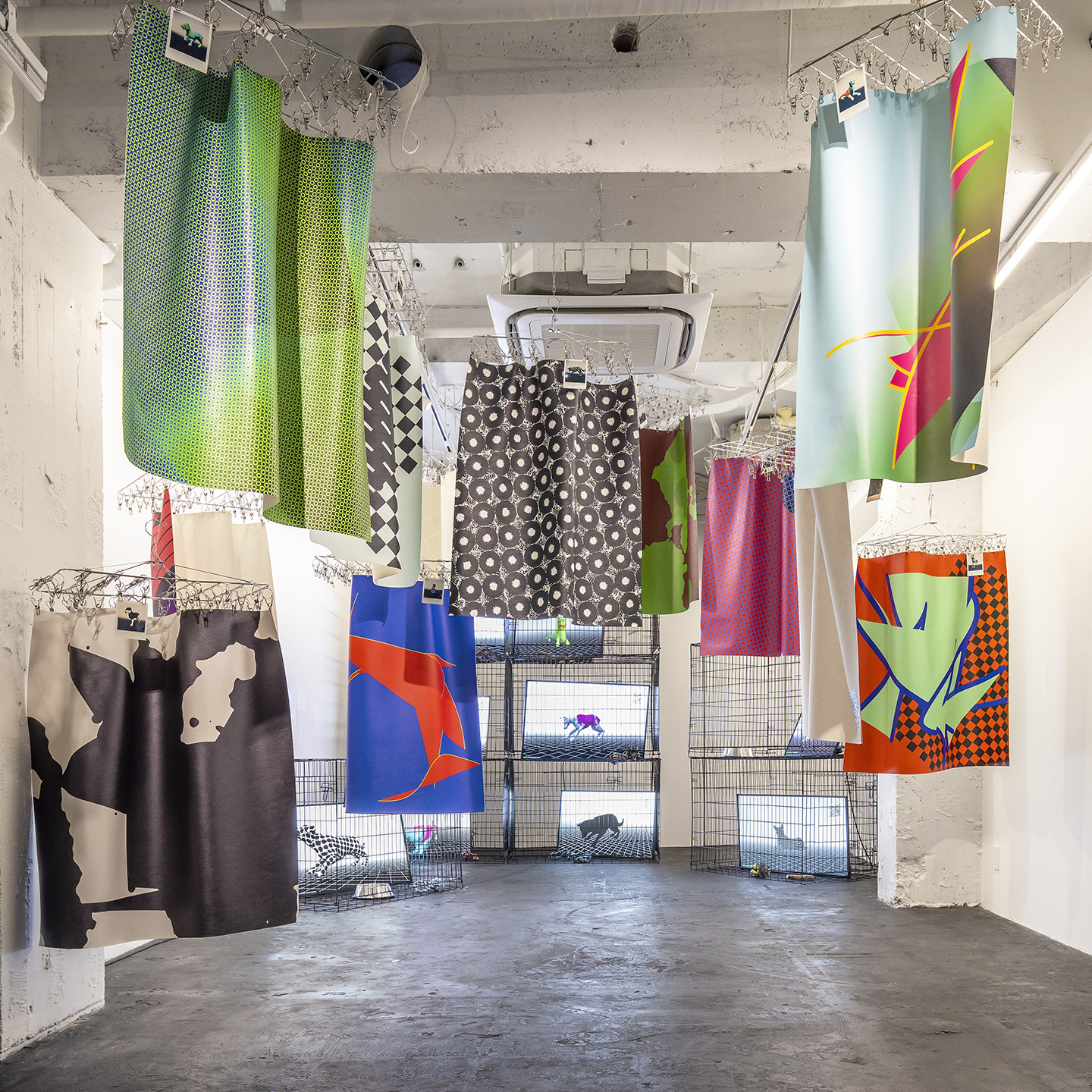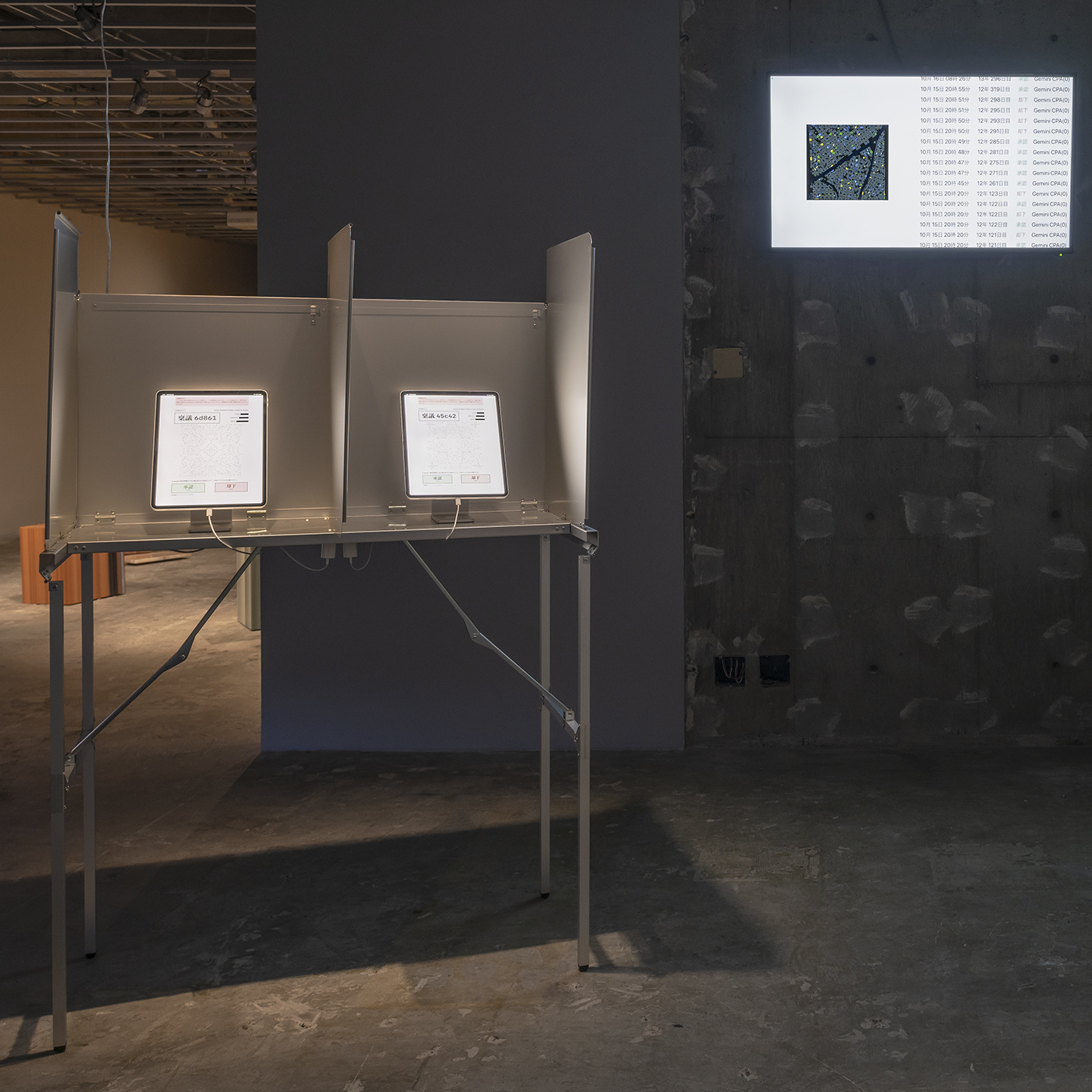Petra Szemán, an artist from Hungary keeps pursuing relationships between movements/sceneries and humans through his video contents.
For Petra, a ‘pilgrimage’, where you visit the locations in real world that fictional stories took places in, is a behavior to overlap fictional worlds and physical realities and also an attempt to cross the border between two different dimensions. Petra’s standpoint based on that idea will speak to many people who are interested in the fusion of digital and real spaces.
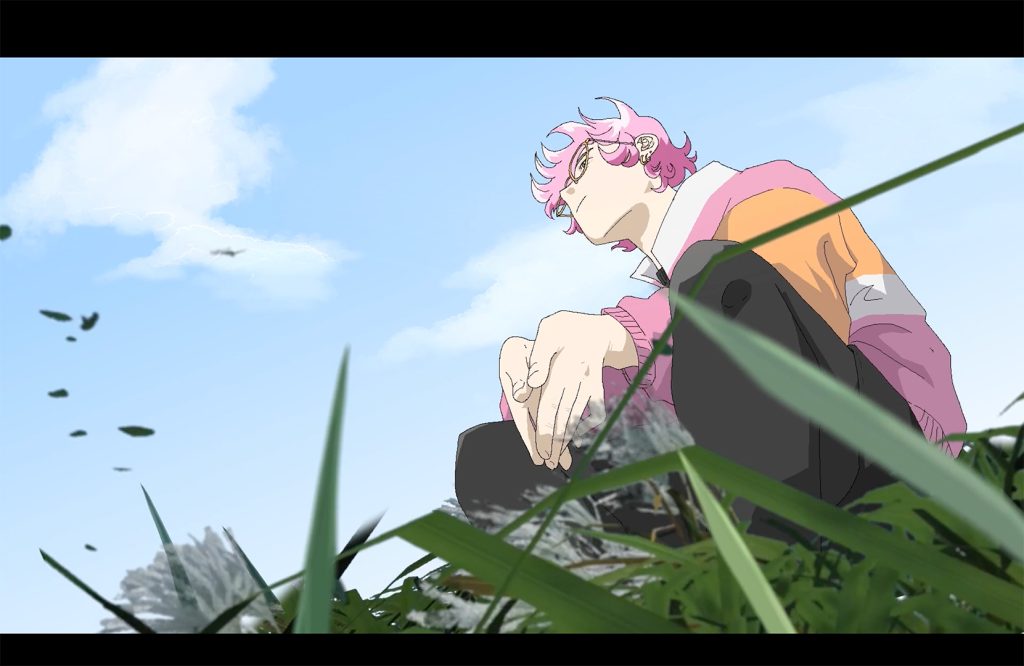
Felt charms beyond words from Japanese anime
――What made you interested in arts and create your contents?
Petra Szemán (hereafter referred as Petra): I’ve liked drawing since I was little, and after graduating high school, I left Hungary, where I was born and grew up, to study arts in England at The University of Newcastle.
I learned how to use After Effects when I was a Sophomore, and started creating anime and digital contents. I think that my experience back then, where I put various kinds of materials, such as real-action movies and fragmentary anime contents, together to create a single video, is the base of my current style.

――We feel influences of anime and video games from your works.
Petra:I have been interested in those areas. Recently I mainly watch Japanese anime, but as a kid, I watched Hungarian or former Soviet Union’s anime. I was particularly interested in works by Marcell Jankovic (1941~2021), a Hungarian anime director. Motifs of his works were Hungarian myths or folk tales.
SON OF THE WHITE MARE by director, Marcell Jankovic – Official Trailer (4K Restoration)
Other video game that left an impression for me is Air, which is a visual novel game. I started with the anime version, but I love it including the original game. It has a complex story and has some parts that are still difficult for me to understand, but this has been memorable work since I saw it for the first time.
Out of the works by the brand ‘Key’, which created Air, I particularly like works by the scenario writer, Jun Maeda, who has been most influential for me.
※RPG game released by Bethesda Softworks in 2011

――Did you have chances to watch Japanese anime in Hungary as well?
Petra:The first Japanese anime I watched was Jungle Emperor LEO by Osamu Tezuka. In late 90s, Pretty Guardian Sailor Moon was on TV, but I did not recognize it as Japanese anime at that time.
Many of the Japanese anime shows that were broadcast in Hungary were what were imported from Japan to France, then imported from France to Hungary, so some of them were broadcast as French show, even if they were created in Japan.
I started to be exposed to anime deeply through websites with video contents. I watched anime with English subtitles back then, but I was not good at English yet, and could not speak Japanese either. I did not understand audio nor subtitles, so I did not understand what characters were saying, but I was attracted to how sceneries were expressed or quick story developments of the shows.

Influence of 5 CENTIMETERS PER SECOND by Makoto Shinkai
――I am thinking maybe you watched the anime movie, 5 CENTIMETERS PER SECOND directed by Makoto Shinkai at that time, which was mentioned in your contents, About their distance. How did you feel when you watched it for the first time?
Petra:The combination in the last scene of the song One more time, One more chance by Masayoshi Yamazaki and how that part was expressed really gave me something that was beyond words. The song had been released ten years before the movie, and Makoto Shinkai asked if he could use it, which was welcomed. I think that song matches that part the best.
When I watched 5 CENTIMETERS PER SECOND, I really wanted to get on the train of the Ryomo line, which was in the part where the main character, Takaki headed to Tochigi. My first trip to Japan was because of this movie as well.
5 CENTIMETERS PER SECOND trailer (Filmarks YouTube page)
Petra:After the workshop I talked about earlier, I started to learn anime creation, and was largely influenced by Makoto Shinkai as well. I visited Japan through foreign training program of my college, to actually be in the scenery he pictured and to experience the route the main character passed by train.
There was little information regarding anime pilgrimage in English back then, and I barely visited the destinations by collecting information from blogs by Japanese people that I translated through Google, or by investigating the route of train line used as motifs, looking at background art books by Makoto Shinkai.

――At the time you visited the locations that the movie took places, the story of 5 CENTIMETERS PER SECOND and the sceneries you were actually seeing with your eyes were overlapping. Did those experiences affect your creation activities afterwards?
Petra:Exactly. When I followed the route of the Ryomo line or visited a railroad crossing in Yoyogi, I had a strange feeling where I wanted to say, ‘I’m home’, although that was the first time I visited Japan. That was when the memories that the main character in the story had overlapped my own memories.
Sceneries that overlap viewers’ memories and images
――Could you tell me about the character ‘Yourself’ who appears your contents Openings !!! and About their distance often?
Petra:When I started creating anime in college, I could not be confident about myself to be an artist. Yourself is what I pictured back then, to cheer myself up. It is a character that I created to look like myself, thinking that I wanted to be like this character. The part of manga where he was talking with himself in the future was an emotional support for me.
Afterwards, when I started to create video contents , I started to have the appearance of Yourself. Yourself has been around ever since, but now I feel that Yourself is my avatar, and at the same time a different character who is not myself.
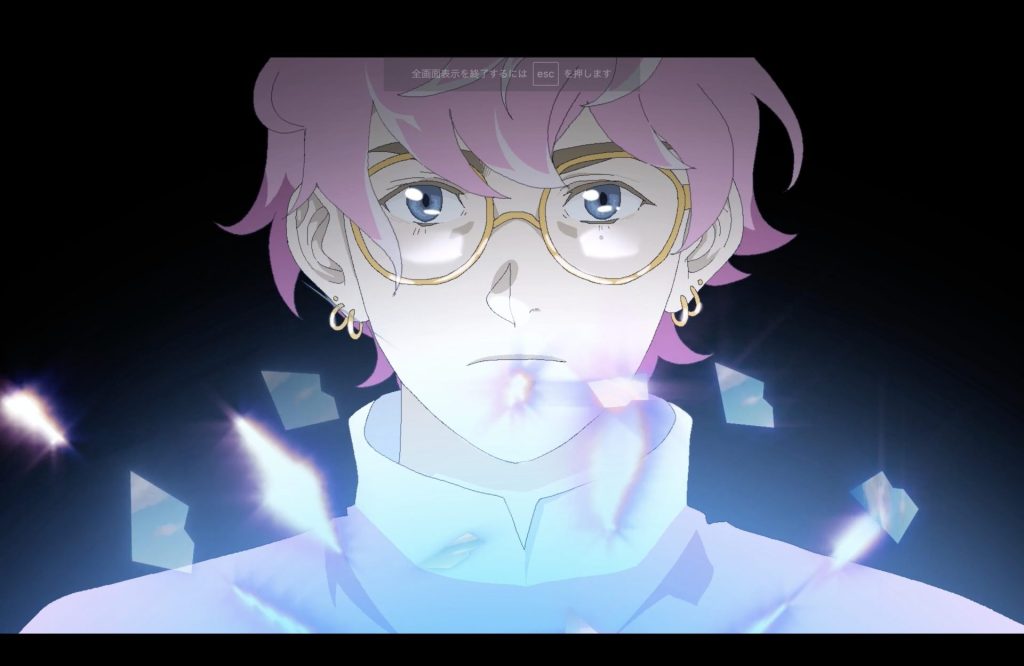
――Yourself is you and an existence that is not you at the same time, and his appearance has an interesting factor that a single part would have different views at the same time.
Things have aspects, where for example stating ‘this is a cup’ would define something and remove other possibilities, but we wish to keep the different possibilities that were removed as well. I felt that maybe that is the reason you express layers of multiple views or sceneries at the same time. Is that right?
Petra:I think that many people limit the possibilities of avatars in the same way. For example if avatars are not used by players in video games, people would think they do not exist, and they would appear only when players use them.
However, I do not want to think that way. I think it is more accurate to say that they are not recognized by people, than saying that they do not exist.
――I think that how possibilities are kept for nonvisible things works the same about views of sceneries as well. What are sceneries for you, Petra?
Petra:For me, the most important thing about sceneries is if you can really understand them when seeing magnificent sceneries, such as ocean or mountains.
For example, when you see Mt. Fuji, sometimes you do not feel that you are seeing it even if you understand with your head that it physically exists there. When you see sceneries, your memories, preconceptions, thoughts, or images from books read all overlap it.
In other words, people cannot see sceneries apart from subjectivities, and that is why I express sceneries as something that is larger than my limited recognitions in my contents.

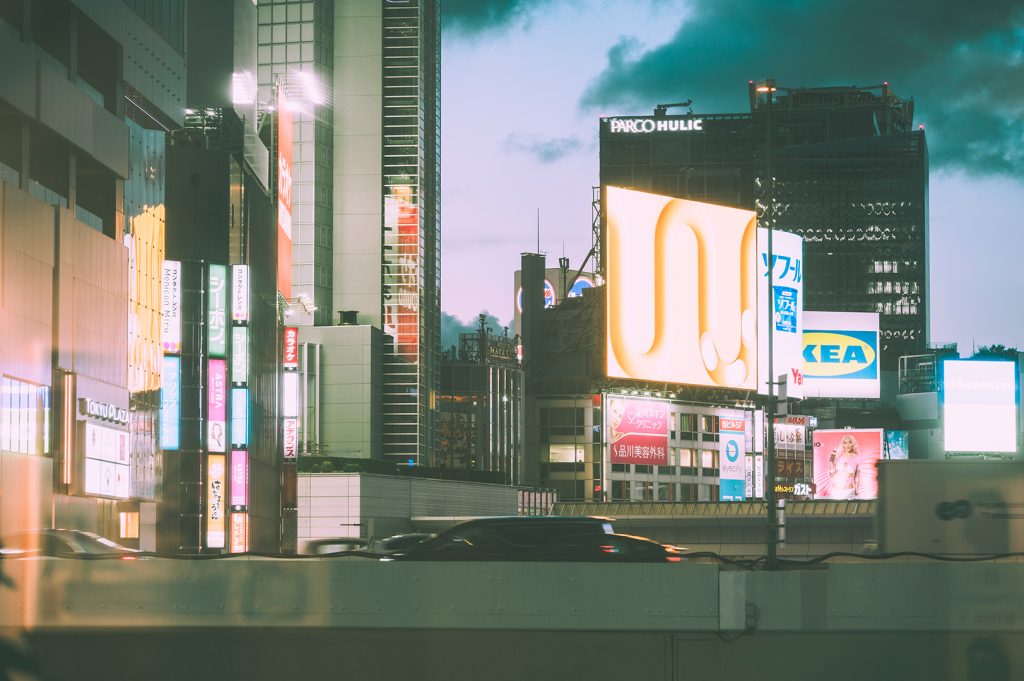
Think about human living with machines, seeing views from a train window
——Watching your contents, I feel that you are interested in mobility.
Petra:The purpose for people to ride trains is to move from location A to B, but the time on train is the loading time in video games, which is in the middle area that is not location A nor B.
José Esteban Muñoz, a queer critic wrote in his book Cruising Utopia: The Then and There of Queer Futurity, that we could have the possibility of utopia with an assumption that utopia or pure queer do not exit yet, by keep acting focusing on the unseen future and new ways to live.
Similarly in my contents, with constant mobilities, I indicate the possibilities to arrive at new places or even the possibilities that the destination would change on the way.

Petra:Topic on sceneries and mobility reminds me of what a scholar, Wolfgang Schivelbusch (1941~2023) said. Originally, a human and a train cannot move at the same speed. At the time when Schivelbusch wrote books, seeing sceneries that move very fast from train windows made people feel uneasy.
With that reason, demands to read books on your lap in trains to distract that feeling appeared, then they started selling books at stations. That story left an impression for me. Seeing views from a window of a moving train means that you are seeing the view in a machinery speed, and I think we could say that you are half mechanized.


――it is true that inventions of transports have changed human’s views drastically.
Petra:Maybe it was natural for trains to be a theme to think about mobility and sceneries because they were broadly used by people as a public transportation. An author, Evan Caldar Williams mentioned human living with machines in his book Shard Cinema in relatively early stage, and he also wrote that people who work at factories directly touched machines.
They suddenly had to work with machines that move at speeds that their bodies could not understand. It is difficult for us to imagine what kind of experience for the workers then.
――Lastly, can I ask your plan or outlook for the future?
Petra:I am now making a video. It is called border as interface, and it is about boarder between countries, boarder between you and others, boarder between human and machines, and interfaces. I am interested in interface, and I would like to explore what the superficial things I touch truly are.
After this, I have a plan to create a video game with a visual artist, David Blandy, who is in England. That will be probably in 2025. He is the artist I was most influenced by in college, so I am looking forward to work with him.

Guest Profile
-
Petra Szemán
Petra Szemán
Born in Budapest, Hungary in 1994. An artist who creates video contents using sceneries like anime or video games. Main motifs are events where real life is felt fictional. The main character in his works is ‘Yourself’, whose model is himself, who travels across various digital areas and explores borders or situations there. Through his creation activities, he explores how our memories or self-images are formed in the contemporary sceneries filled with fictions on and off screen.
- Website: https://www.petraszeman.com/
- X: https://x.com/petra_szeman
- Instagram: https://www.instagram.com/petra.szeman
Co-created by
-
Mirei Takahashi
Editor, Writer
Mirei Takahashi
Editor, Writer
-
Yuji Tanno
Photographer
Tag
Share
Discussion
Index
Index
Archives
Recommend
Recommend
Recommend
Recommend
Recommend
-

{ Prototype }
Fracture Born From The Fusion Of The Virtual And The Physical ── Sunaki “GEMINI EXHIBITION: Debug Scene” Artist Interview 03
Fracture Born From The Fusion Of The Virtual And The Physical ── Sunaki “GEMINI EXHIBITION: Debug Scene” Artist Interview 03
Fracture Born From The Fusion Of The Virtual And The Physical ── Sunaki “GEMINI EXHIBITION: Debug Scene” Artist Interview 03
-

{ Special }
Revolutionising Fashion in the Mirror World with The Fabricant
Revolutionising Fashion in the Mirror World with The Fabricant
Revolutionising Fashion in the Mirror World with The Fabricant
-

{ Community }
Opening Yourself Up To The Unknown: Monk Shoukei Matsumoto Discusses Well-Being In The Metaverse Era
Opening Yourself Up To The Unknown: Monk Shoukei Matsumoto Discusses Well-Being In The Metaverse Era
Opening Yourself Up To The Unknown: Monk Shoukei Matsumoto Discusses Well-Being In The Metaverse Era
-

{ Community }
If Sketch
If Sketch
If Sketch
Hot topics
Hot topics
Hot topics
Hot topics
Hot topics
-

{ Community }
Scent Transcends Memory to Change Behavior. The Future of Digital x Olfaction, by Scent Marketing Pro Gouchi Hamada
Scent Transcends Memory to Change Behavior. The Future of Digital x Olfaction, by Scent Marketing Pro Gouchi Hamada
Scent Transcends Memory to Change Behavior. The Future of Digital x Olfaction, by Scent Marketing Pro Gouchi Hamada
-

{ Community }
The stage is a restroom designed by Tadao Ando. Possibilities of media mix that GEMINI pioneers.
The stage is a restroom designed by Tadao Ando. Possibilities of media mix that GEMINI pioneers.
The stage is a restroom designed by Tadao Ando. Possibilities of media mix that GEMINI pioneers.
-

{ Community }
“Conveying the Moment of ‘Now’ in History: Catalan Artist Xavi Bové’s Light Expressions”
“Conveying the Moment of ‘Now’ in History: Catalan Artist Xavi Bové’s Light Expressions”
“Conveying the Moment of ‘Now’ in History: Catalan Artist Xavi Bové’s Light Expressions”
-

{ Community }
“Designing with Heart: How Amanda Talbot is shaping a better future through emotionally intelligent AI”
“Designing with Heart: How Amanda Talbot is shaping a better future through emotionally intelligent AI”
“Designing with Heart: How Amanda Talbot is shaping a better future through emotionally intelligent AI”
-

{ Community }
Unearthing the Future: How ancient history can guide modern innovation with Darius Arya
Unearthing the Future: How ancient history can guide modern innovation with Darius Arya
Unearthing the Future: How ancient history can guide modern innovation with Darius Arya
-

{ Community }
Interview with Masayoshi Yokoyama from Ryu Ga Gotoku Studio. Talks about reality in games and the future of the industry
Interview with Masayoshi Yokoyama from Ryu Ga Gotoku Studio. Talks about reality in games and the future of the industry
Interview with Masayoshi Yokoyama from Ryu Ga Gotoku Studio. Talks about reality in games and the future of the industry
-

{ Community }
The new form of pilgrimage. What is the border of real and fictional worlds that Petra Szemán pictures?
The new form of pilgrimage. What is the border of real and fictional worlds that Petra Szemán pictures?
The new form of pilgrimage. What is the border of real and fictional worlds that Petra Szemán pictures?
Special
Special
Special
Special
Special
Featured articles spun from unique perspectives.
What Is
“mirror world”...
What Is
“mirror world”...
What Is
“mirror world”...
What Is
“mirror world”...
What Is
“mirror world”...
“mirror world”... What Is
“mirror world”... What Is
“mirror world”... What Is
“mirror world”... What Is
“mirror world”...
Go Down
Go Down
Go Down
Go Down
Go Down
The Rabbit
The Rabbit
The Rabbit
The Rabbit
The Rabbit
Hole!
Hole!
Hole!
Hole!
Hole!
Welcome To Wonderland! Would You Like To Participate In PROJECT GEMINI?




